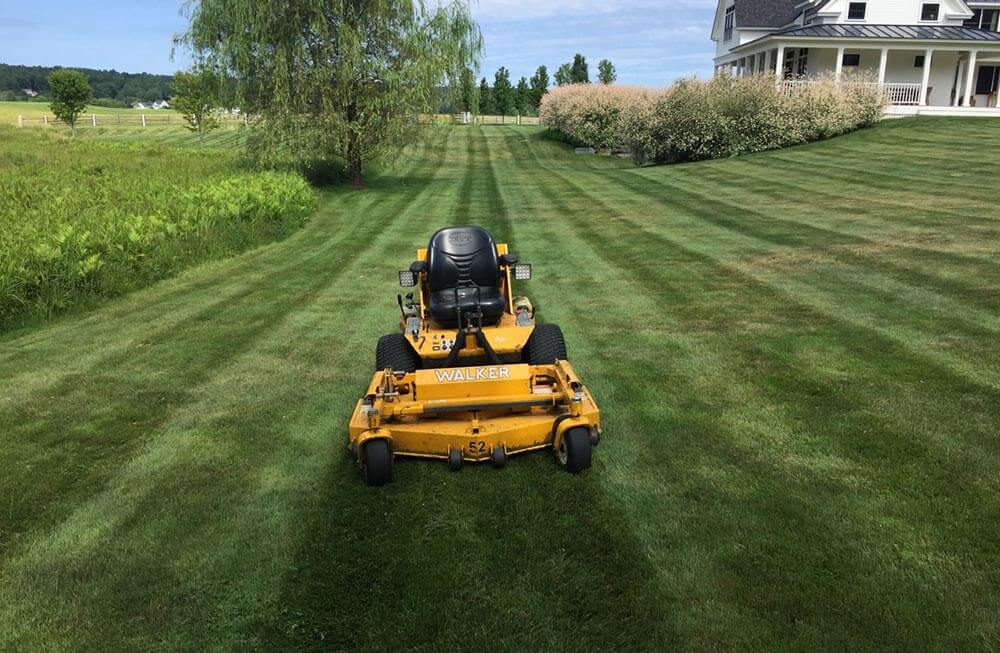“I want to have a dry, patchy lawn,” said no homeowner ever.
Every homeowner and business owner yearns for beautiful lush, green grass, but if you’re like most, you might have dry and dead or even dry, patchy spots throughout your lawn.
Whether you’ve tried some remedies or not, you’re frustrated with the look of your lawn. But never fear, we’ve got five common reasons for patchy grass and how to fix them, including:
- Not enough oxygen
- Not enough sun
- Not enough water
- Not enough fertilizer
- Damage from pets
1. Your grass isn’t getting enough oxygen.
Just like any plant, grass needs plenty of oxygen to survive. When it’s deprived of it, the roots will stop growing and the blades will start to lose their rich, green color.
Why isn’t your grass getting enough oxygen? The most common reason is compacted soil, where the dirt is packed so tightly around grass and its roots that precious oxygen isn’t reaching the plants properly.
The fix? Regularly aerating your soil by removing cores of dirt will ensure air and water can easily reach your grass roots. We recommend aerating in the fall, which is the perfect time to rejuvenate your lawn for the following season.
2. Your grass isn’t getting enough sun.
Grass doesn’t just need oxygen to thrive, it also needs sun. You might notice that grass in the shady spots on your lawn is starting to get thin and spotty.
The fix? You have three options when your grass is getting too much shade.
- You can consider removing the tree(s) or shrubbery that is shading that area of grass.
- Convert the area to hardscaping or landscaping that doesn’t require a lot of sun.
- Overseed your lawn with grass seed that can thrive in more shady areas.
3. Your grass isn’t getting enough water.
Under-watered lawns cause the grass to go dormant, so you’ll notice significantly slower growth and a brown or gray color.
Be sure that your grass receives about 1” - 1.5” of water per week. Here in Maine, we usually receive that amount in rainwater each week, but during dry weeks or hot summer days, you may need to make up the difference.
That said, it’s also important not to overwater your lawn. If that’s the case, you’ll start feeling squishy, wet soil when you walk on the grass, along with an abundance of weed growth.
The fix? Watering a lawn is pretty simple: you can choose to use your garden hose to water your lawn two days a week. Try to water in the morning between 6am - 10am, and stick to about ½” - ¾” of water across your lawn.
The other option is, of course, irrigation. An irrigation system can be installed to automatically water your lawn on whatever schedule you deem necessary based on the rainfall.
4. Your grass isn’t getting fertilized.
Feeding your grass is essential for strong roots and grass that continues to stay lush and green, season after season.
Fertilizer isn’t just for seeding, it’s also for existing grass. A healthy lawn needs soil that has a balanced pH and macronutrients. Depending on your soil composition, you’ll likely need ongoing fertilization to maintain ideal levels.
A lawn that needs fertilizer might show signs of slow growth, yellowing blades, or low macronutrient levels (shown by a soil test).
The fix? This one’s easy! Continuously fertilize your lawn to maintain the best soil composition and nutrients for healthy grass.
5. Your grass has damage from pets.
If you have a dog, chances are you have some patches where they like to do their business. Unfortunately, dog urine can burn your grass, leaving discolored and bare spots due to the high volume of nitrogen and salts.
The fix? Follow these easy steps to fix the damage from dog urine spots in your lawn:
- Rake the patch of grass and remove as much dead grass as you can.
- Lay down a layer of fine ground limestone (which will bring the soil back to the proper pH) and water the area so it absorbs. Allow the area to sit for about a week.
- Add top soil and sprinkle grass seed on the patchy area.
If you're noticing that your lawn is patchy and thin, it may be because of one or more of these five common issues. Try the fix for your grass problem and you’ll be on your way to a beautiful green lawn.
For help in the greater Buxton, Maine area with your lawn and landscaping needs, contact us at Prime Cut Landscaping & Lawn Care today






